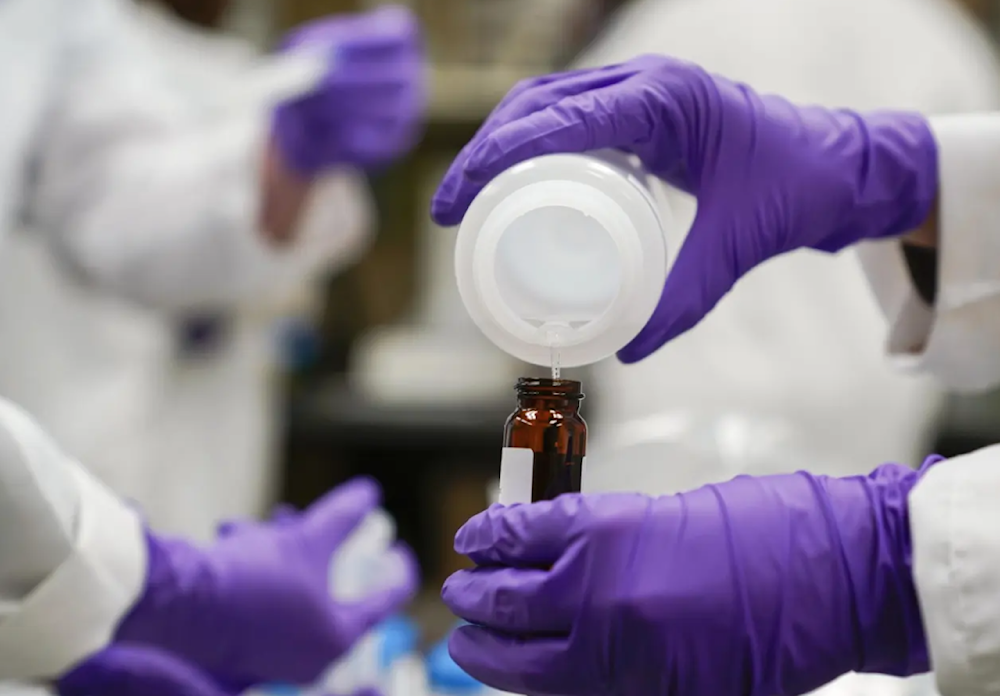Toxic PFAS absorbed through skin at levels higher than thought
Researchers at Birmingham University used studies that model lab-grown tissue to evaluate the percentage of PFAS compounds being absorbed into human skin.
-

A water researcher pours a water sample into a smaller glass container for experimentation as part of drinking water and PFAS research at the US Environmental Protection Agency Center For Environmental Solutions and Emergency Response on February 16, 2023, in Cincinnati. (AP)
A new study "for the first time proves" that hazardous PFAS chemicals are absorbed via human skin at significantly higher quantities than previously believed.
Though modeling and studies have shown that the harmful chemicals are absorbed via the skin, University of Birmingham researchers say they utilized lab-grown tissue that resembles human skin to quantify the amount of PFAS compounds that may be absorbed.
According to main author Oddný Ragnarsdóttir, "Uptake through the skin could be a significant source of exposure to these harmful chemicals."
Known as "forever chemicals," PFAS are a group of about 16,000 chemicals used to make items resistant to water, stains, and heat. They do not naturally degrade and have been discovered to accumulate in people. The chemicals have been linked to cancer, birth abnormalities, liver illness, thyroid disease, low sperm counts, and a variety of other major health issues.
Humans are most typically exposed to them through water and nutrition, but researchers have focused on inhalation and skin absorption recently. The latter is especially concerning given the extensive spectrum of PFAS-containing goods that come into contact with the skin, including bandages, waterproof clothes, cosmetics, personal care goods, furniture, baby items, and guitar strings.
The researchers placed samples of 17 distinct PFAS compounds into a three-dimensional tissue model and were able to determine the percentage of the chemicals that were absorbed.
The skin absorbed "substantial" levels of 15 PFAS, including 13.5% of PFOA, one of the most hazardous and prevalent forms of the toxin. A prolonged treatment allowed the skin to absorb 38% more of the PFOA dosage. US officials determined that nearly no amount of PFOA exposure in drinking water is safe.
PFOA is a bigger molecule, but smaller "short-chain" PFAS, which the industry currently more regularly makes and claims to be safer, were absorbed in higher amounts - up to nearly 60% of one short-chain compound dosage was absorbed through the skin.
Co-author of the study Stuart Harrad explained that “this is important because we see a shift in industry towards chemicals with shorter chain lengths because these are believed to be less toxic – however the trade-off might be that we absorb more of them, so we need to know more about the risks involved."
In 2023, a major mapping project found that forever chemicals were found in high concentrations at thousands of sites across the UK and Europe.
A US Geological Survey suggested in 2023 that almost 50% of tap water in the US is contaminated with them.

 3 Min Read
3 Min Read








